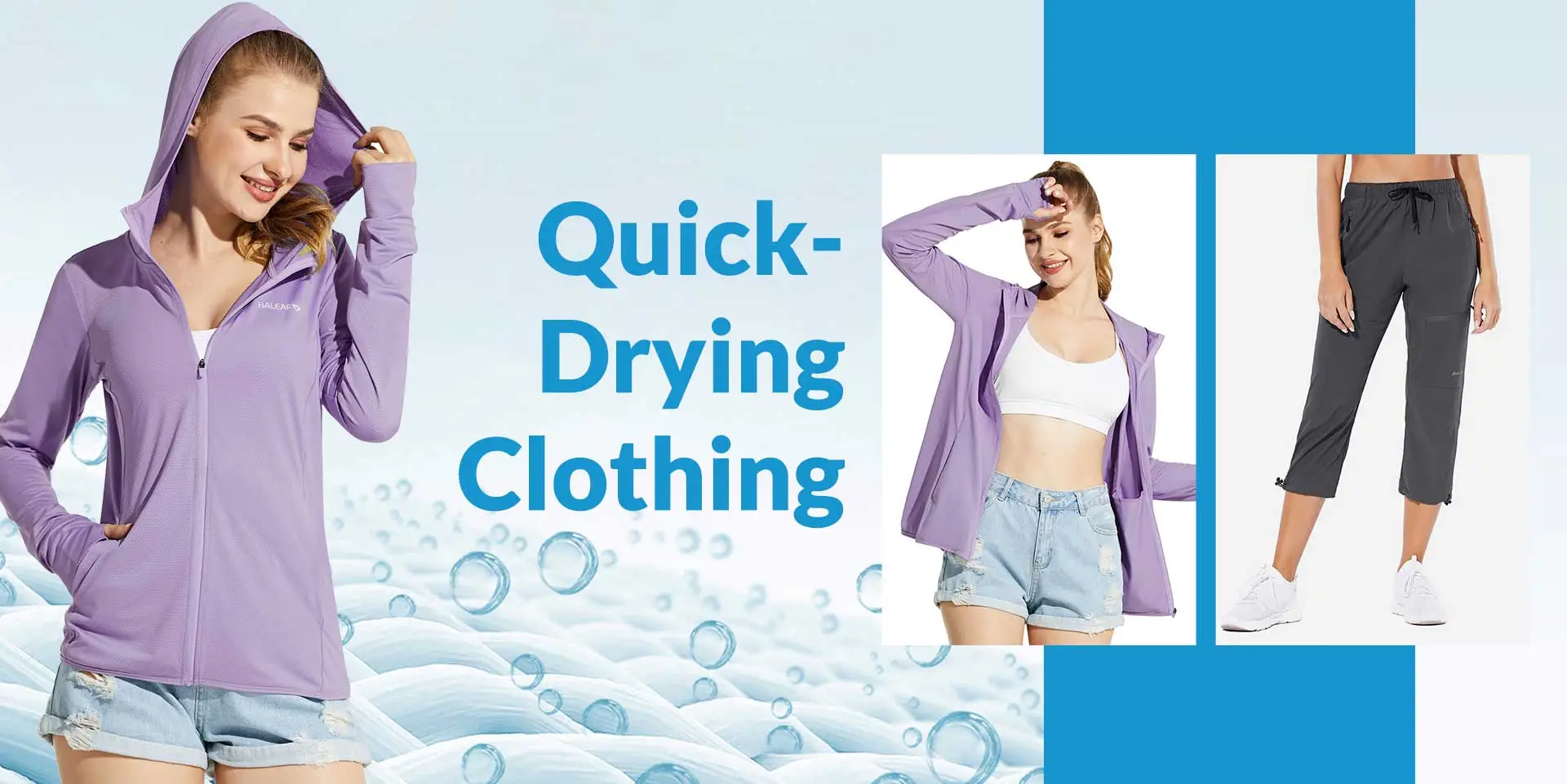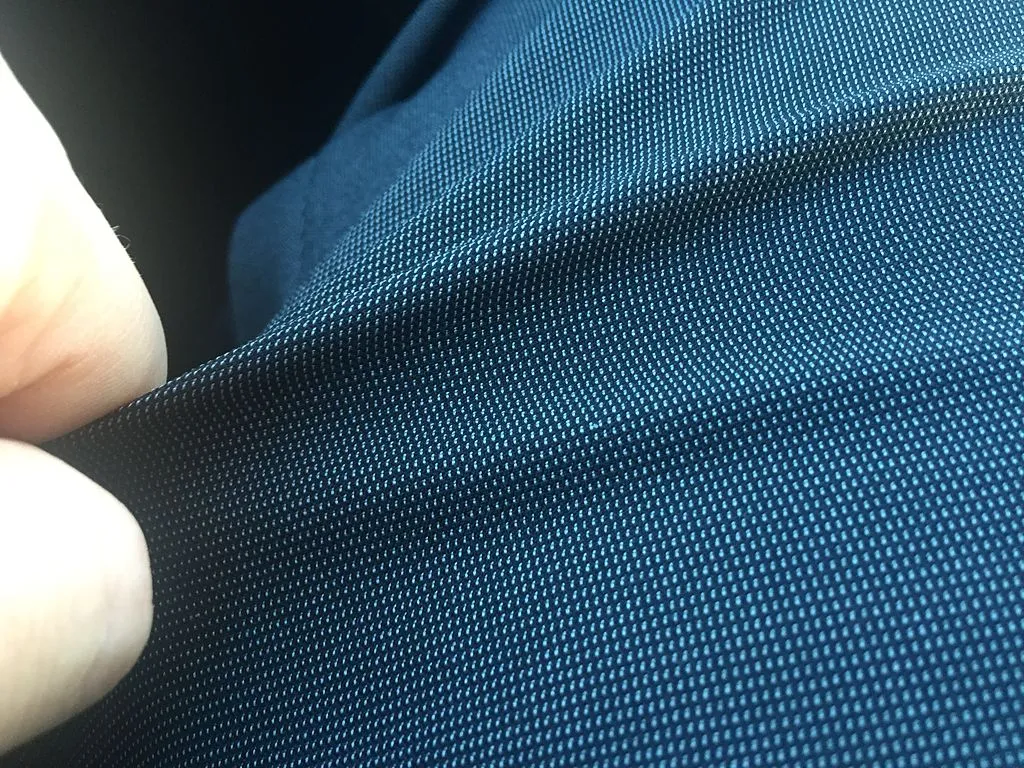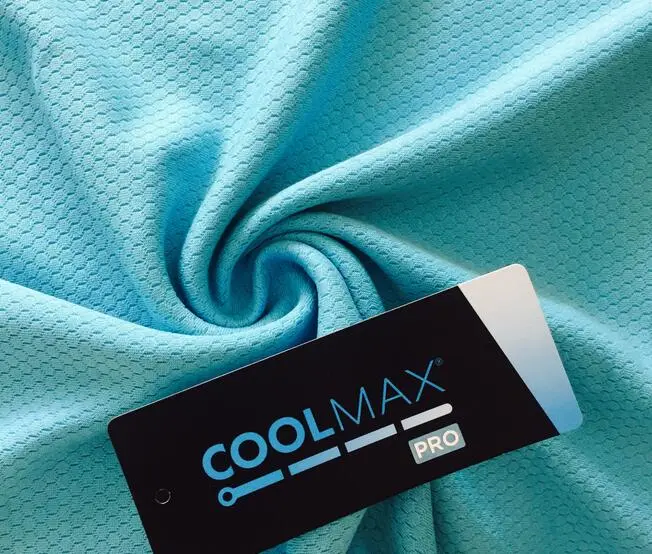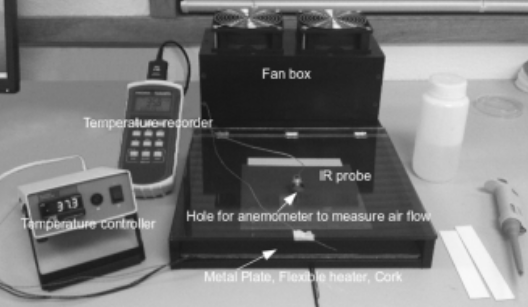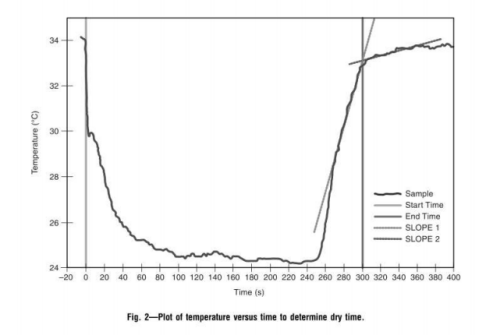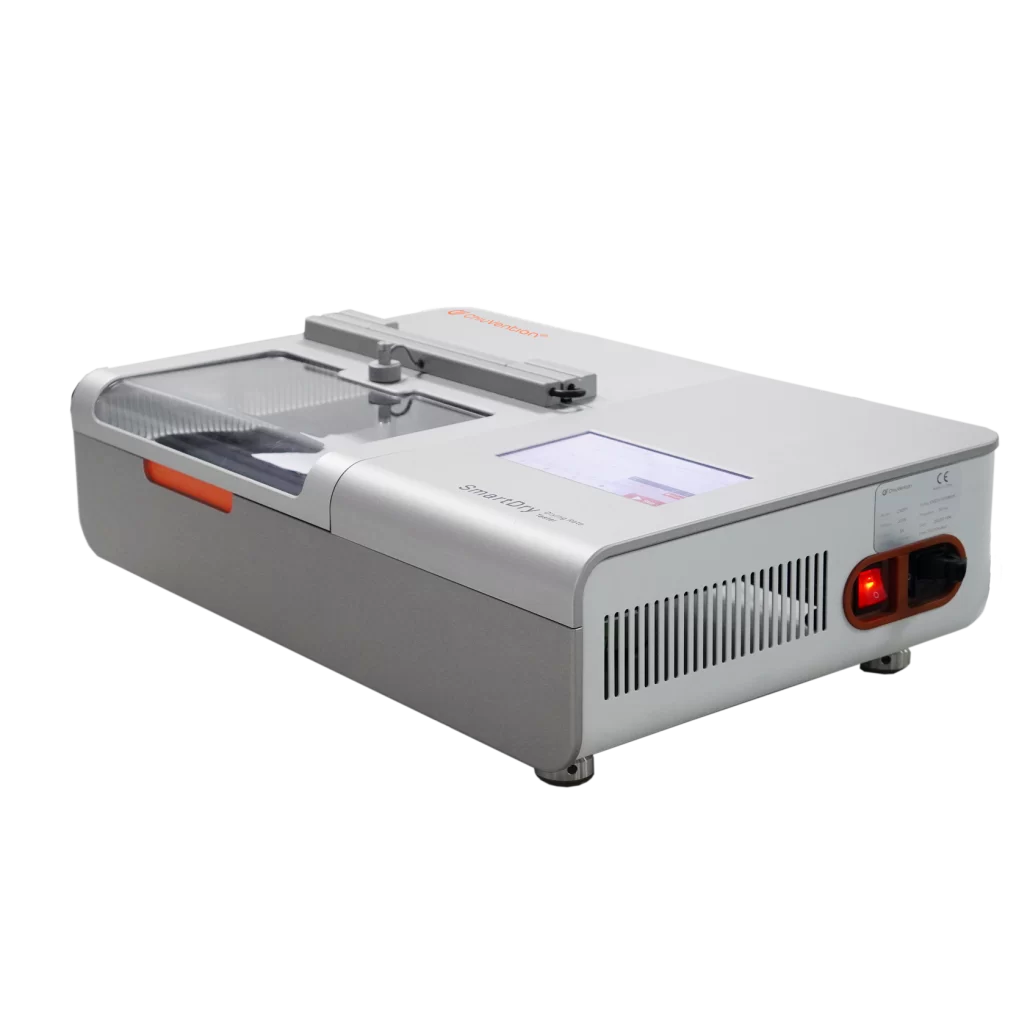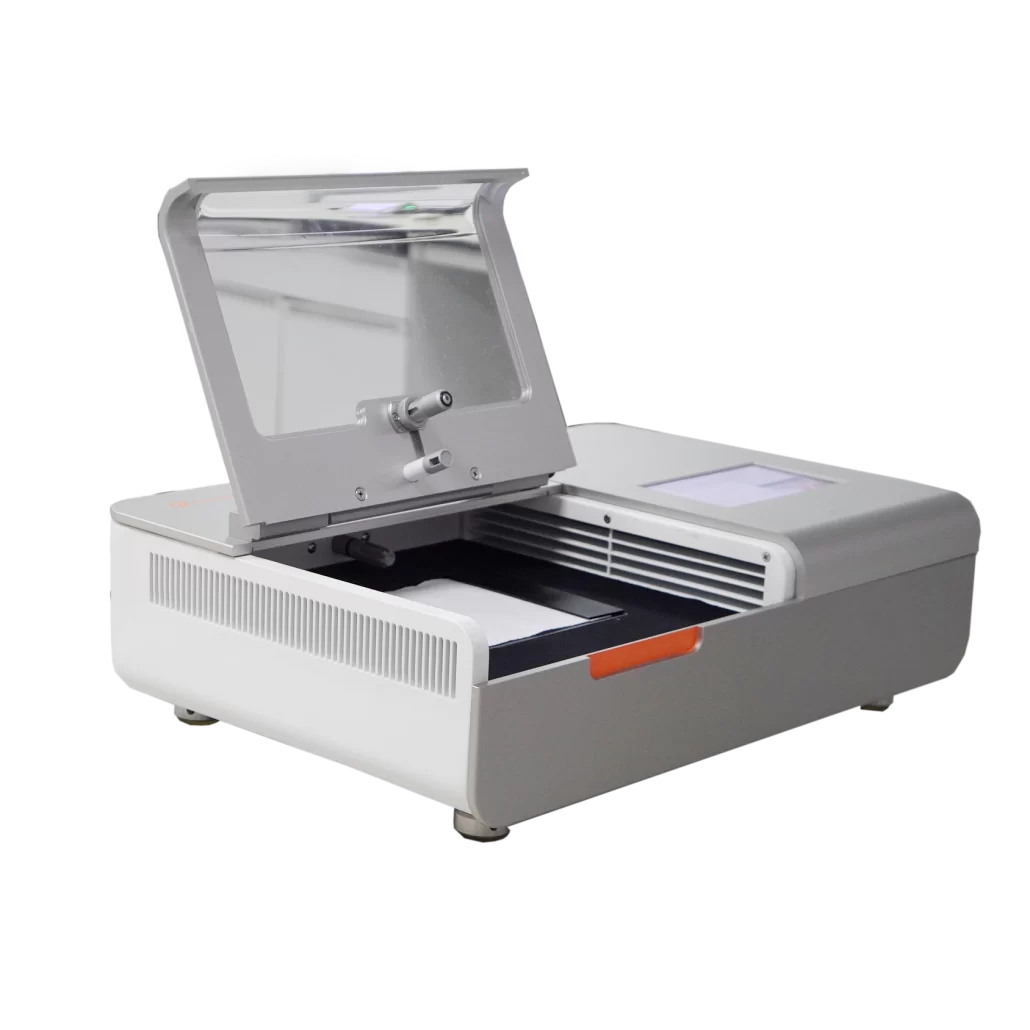What is the Dry Rate in Textiles?
To answer this question, you first need to know about quick-drying clothes. Imagine this scenario: going out in summer, even if you have enough sun protection, you can’t avoid sweating.
If the sweat on your clothes cannot evaporate in time, your skin will be sticky and uncomfortable. On the contrary, if you wear a quick-drying T-shirt, the sweat will evaporate immediately, and you will be very pleasant!
What are quick-drying clothes? As the name suggests, a quick-drying clothe is a piece of clothing that dries quickly. However, quick-drying clothing dries quickly not by absorbing the sweat, but by evaporating it through air circulation, quickly transferring it to the surface of the clothing, thus achieving the purpose of quick-drying.
Therefore, for manufacturers specializing in quick-drying clothes, it is important to assess whether a fabric is suitable for quick-drying clothes.
Therefore, in the program of textile testing, there is the index of fabric quick-drying rate. The drying rate of fabric refers to the ability of clothing to dry quickly through air circulation or other methods after absorbing moisture in a humid environment. This indicator is often used to measure the moisture absorption and quick-drying properties of fabrics to keep the wearer dry and comfortable. Common quick-drying fabrics will be characterized by good moisture absorption, rapid perspiration, and drying.
What Kind of Fabrics Can Meet the Standard of Quick-drying Clothes?
In the case of the same external conditions, the drying speed of quick-drying clothes is about 50% faster than ordinary cotton fabrics, so in the case of sports or outdoor activities, wearing moisture-wicking and quick-drying clothes is more comfortable than wearing ordinary cotton fabric fabrics, so quick-drying clothes are highly favored by outdoor sportsmen.
The Birth and Development of Quick-drying Clothes
The rapid popularization of quick-drying clothing has only occurred in recent decades.
Before that, cotton was generally the preferred material for sportswear due to its excellent moisture absorption. However, the disadvantage of cotton clothing is that it is not easy to dry after being soaked in sweat, and the body is like being wrapped up in a wet cloth after sweating, which is very uncomfortable. While the chemical fibers are easy to dry but poor moisture absorption, so sweat can not be eliminated in time, accumulating on the surface of the skin, stuffy and airless. Then the two properties— “moisture absorption” and “fast drying” were previously seen as irreconcilable contradictions.
With the advancement of material technology, chemical modification technology has emerged. Researchers try to enhance or improve the function of non-hydrophilic fabrics in absorbing, transferring, and discharging water through fiber modification or special fabric structure design so that they are both water-absorbent and moisture-conducting at the same time. Compared with untreated cotton clothing, this kind of chemical fiber fabric is more likely to evaporate moisture and dry faster. This has led to the achievement of moisture-wicking and quick-drying clothes.
What Are the Common Fabrics for Quick-drying Clothes?
Dr. Yarn Fiber
Dr. Yarn fiber is known as polypropylene fiber, commonly known as polypropylene, of which the ultra-fine denier polypropylene is a new variety that is like a simulation of silk, in addition to the advantages of light specific gravity, good warmth, and strength, corrosion-resistant, abrasion-resistant, etc., also both environmentally friendly, soft, moisture-conducting and fast-drying, breathable and so on. It is an excellent choice of quick-drying clothing.
Polyester Fiber
100% polyester fiber will give a feeling of wearing a layer of nylon in the body. It’s not comfortable or breathable. To avoid this, different brands have their solutions according to their functional positioning. Some will choose the new weaving method to avoid the discomfort feeling that brought by polyester fiber after absorbing water; Some are relatively more focused on adding some cotton and other components to polyester fiber; Some can make cotton fiber and other fabrics also have a very good quick-drying function.
COOLMAX
COOLMAX is one of the most common and widely used fabrics, developed by DuPont. The outstanding feature of this fabric is its strong wicking function, which benefits from the hollow structure of COOLMAX. This category of quick-drying clothing is woven with permanent moisture-wicking raw yarn. This quick-drying fabric is produced by changing the shape of the yarn so that the original regular round yarn increases the number of small holes for sweat to flow out. This kind of yarn is particularly expensive because of the difficulty of processing and is generally purchased by high-end athletes.
MONI-DRY
MONI-DRY is a moisture-absorbent and quick-drying fabric, developed and produced by COLUMBIA. Its main feature is the super volatility and water absorption, 2 to 3 times stronger than the general cotton fabric, thus effectively making the wearer feel comfortable and dry.
ACTIVENT
ACTIVENT is a chemical material of windproof and breathable, but also a little waterproof that is produced by the U.S. GORE company. It is a film and needs to be pressed together with other nylon materials. It is suitable for cyclists as quick-drying clothes.
Using Polyester and Polyether Chemical Additives
This category of quick-drying clothing is made of fabrics that added polyester and polyether chemical additives after the process of finishing, to achieve the effect of temporary quick-drying. These kinds of additives have been tested to be non-toxic, but the function of quick-drying will diminish as time goes by.
Therefore, no matter which category of quick-drying clothes, its biggest feature is rapid perspiration, quickly transferring sweat to the surface of the clothes, and accelerating evaporation by enlarging the area of sweat to achieve the purpose of quick-drying. It can keep the skin dry and fresh, then more and more favored by outdoor sportsmen.
What is the Dry Rate 201?
This is an acronym for AATCC TM 201, the standard for testing fabric drying rates.
The American Association of Textile Dyers and Chemists (AATCC) has developed and approved two evaluation methods for testing fabric drying rates.
The first is AATCC Test Method 200-2013, Drying Rate of Textiles on Full Moisture Absorption: Air Flow Method.
The second is AATCC Test Method 201-2013, Fabric Drying Rate: Heated Plate Method.
A comparison of these two test methods is shown below:
| Test Standards | Air Flow Method AATCC TM 200
| Heated Plate Method AATCC TM 201 |
|
Test Scope | This test is used to determine the drying rate of textiles that are saturated with moisture under airflow.
|
This test is used to determine the drying rate of textiles that have absorbed a defined amount of water in contact with a heated plate under airflow.
|
|
Air Movement
| The fabric is secured to a circular opening device that allows vertical airflow to go through
| Horizontal airflow through the surface of the fabric on a heated plate (simulates the process of human sweating)
|
| Using a heated plate
| No | Yes, heated plate with a temperature of 37 ℃ |
| Expression of Drying Rate
| ml/h | ml/h |
The Test Analysis of AATCC201 Heated Plate Method-Fabric Dry Rate Test
This test method is a more traditional one, involving more equipment and a relatively complicated test procedure. Later we will introduce the more advanced fabric drying rate test instruments available today. (Please read on)
The AATCC201 Heated Plate Method is a common method for drying rate testing of fabrics. The contact heating plate is set at 37°C, the same temperature as the human body, to simulate the surface of skin sweating. This method applies to a variety of fabrics, including knitted, woven, and non-woven fabrics.
Test Sample Preparation
1. Three specimens (15.0 x 15.0 ± 5 cm) were cut from the right, center, and left positions of the entire fabric area.
2. If testing garments or end products, take specimens from different parts of the garment, i.e. sleeves, back, and front.
3. If testing socks or hosiery, cut the specimen lengthwise and test each unique structure.
4. Before testing, make sure the wet balance of the test specimens by ASTM D1776, Standard Practice for Wet Balancing and Testing of Textiles (see 14.2). Each sample is individually placed on a screen or perforated rack in a wet balance frame and wet balanced for a minimum of 4 hours at 21±2°C (70±4F), 65±5% relative humidity.
5. Perform all tests in a standard test atmosphere.
Test Requirements
1. The equipment requires deionized water or distilled water.
2. The temperature of the metal plate is stabilized at 37±1°C, the airflow is 1.5±0.5 m/s, and the amount of water is 1 ml.
3. This test is performed with the same amount of water. If the water reaches the edge of the sample, it is necessary to increase the size of the specimen and perform the test with a new specimen. The same amount of water must be used when further comparing test results.
4. This method can be used to test the drying rate of fabrics containing a film in their construction as long as the water vapor transmission rate of the fabric is greater than 5000 g/m2 /day (see 14.1 of JIS L 1099 Method B1).
5. When testing the fabric in a sock, the sock should be opened and a portion of the inner sock should be in contact with the heating plate to simulate contact between the fabric and human skin.
Terminology
Drying rate – The change in volume of liquid evaporating from a fabric per unit of time.
Note: The drying rate depends on the textile construction, fiber content, garment construction, finishing agent, the atmosphere in which the test is conducted, and the volume of the liquid.
Drying time – the time required for a specified amount of liquid to evaporate from a textile under controlled test conditions.
Note: In this test method, the volume of water is constant between tests, and the test conditions are controlled by the analyzer and the room.
End time – The time at which the curve of temperature changes over time shows an inflection point between the steepest slope and the flat portion of the curve.
Drying Rate Testing Equipment
Temperature Recorder – with 1-second reading, data storage, and transfer to the computer data file.
Infrared thermocouple probe – temperature range 15.0-50.0±0.1°C (59.0-122.0±0.18°F).
Fan Box- Generates an airflow of 1.5±0.5 m/s over the width of the hot plate, measured directly behind the infrared thermocouple probe.
Metal plate- 30.5 x 30.5 ± 0.5 cm.
Flexible heater-30.5 x 30.5 ± 0.5 cm with the controller, temperature maintained at 37 ± 1°C (98 ± 2°F).
Insulated corkboard 30.5 x 30.5 ± 0.5 cm.
Micropipette with adjustable volume, 0.100-1.000±0.003 mL.
Anemometer wire type to measure air flow from 0.5-2.5±0.1 m/s.
Magnetic plastic or metal tape, length of 15.0 cm, width of 4.0±2.0 cm, and thickness of 0.2±0.1 cm, to hold the specimen.
Deionized or distilled water.
Test Steps
1. Turn on the flexible heater and the temperature controller of the fan to stabilize the temperature of the metal plate at 37± 1°C (99±2F).
2. Using a hot-wire anemometer, confirm that the airflow through the metal plate is 1.5± 5 m/s.
3. Place the specimen on the metal plate for five minutes to equilibrate the temperature of the specimen and the metal plate, with the side of the specimen in contact with the skin resting on the surface of the metal plate.
4. Place the infrared thermocouple probe in the center of the specimen at a distance of 1.0± 1 cm above the specimen.
5. Start the recorder, lift the free end of the specimen (the other side of the magnetic strip), and place a drop of 0.200±003 mL of water on the metal plate directly below the specimen so that the specimen is covered with the drop.
6. Observe the specimen to determine the absorption curve produced by the water droplet. If the droplet does absorb to the edge of the specimen, use a larger specimen or reduce the specimen volume.
7. Collect and record the temperature every second until the temperature returns to the initial temperature.
Calculation and Evaluation of Fabric Dry Rate
1. Review the data on the recorder or use a spreadsheet program to plot the temperature over time for each of the three specimens.
2. Determine the start and end times in the graph. The start time is when water is added to the specimen (time 0 in Figure 2). The termination time is the time of the intersection of the most steeply sloping portion of the temperature graph with the flat portion. A linear fit was made to the steepest part of the graph by selecting 7 data points in the steepest part of the graph (slope 1 in Figure 2). A linear fit was made to the flat portion of the temperature plot by selecting 25 data points after the inflection point of the temperature plot (slope 2 in Figure 2).
Average the Drying Time of Three Specimens.
Calculate the rate of drying (R) using the following formula:
R=V/Drying Time
R= drying rate in mL/h
V = test water consumption in mL
Drying Time = End Time – Start Time
Example:R=0.300(mL)/0.05 (h)= 6 mL/h
At last, calculate the average of the three values for each sample.
Note: Laboratory temperature, laboratory relative humidity, instrument airflow, and water volume must be the same when comparing data.
The New Generation of Fabric Dry Rate Tester--SmartDry
This instrument is very intelligent and automated, it integrates the heating plate, fan, high-precision temperature sensor, wind speed sensor, precision dripping device, etc. in one instrument, and it is equipped with a screen operation panel, the built-in software that can directly present the whole testing process and the data curve, automatically calculate the drying time, the amount of water absorbed and the drying rate and the test results can be seen at a glance, and it can be networked through WIFI and connected with the App developed by the manufacturer to realize one-key fast data sharing as well as permanent saving. Moreover, you can realize more data analysis.
Compared with traditional test equipment, this instrument has outstanding advantages, easy operation, and highly intelligent automation, which greatly improves the fabric drying rate test reliability and efficiency.
To operate, the test sample is placed on top of a heating plate at a constant temperature of 37° (99°F), and a certain amount of water rises from the bottom of the instrument to the center of the heating plate and saturates the sample. An anemometer inside the instrument dries the sample. The change in temperature of the fabric is tested by an infrared temperature sensor to determine if the fabric is finished drying, and the drying rate is calculated automatically based on the water consumption and drying time. The data will be presented directly on the screen.
The specially designed parallel cross-flow fan makes the wind speed more uniform and smooth, which can restore the actual evaporation process and make the test results more reliable.SmartDry applies to the AATCC 201 standard.
FAQs of Fabric Dry Rate Test
How is the fabric sample secured to the plate in the AATCC Test Method 201 (TM201)?
The test method indicates that a single hold-down strip be used on the upwind edge. We have found that blue painter’s tape works well for this purpose. We are also aware of clients using double-stick tape affixed to the heated plate. The sample can be stuck directly to this surface, only replacing the tape when it loses adhesion strength. If the test sample has any type of curling or lifting behavior, we recommend adding tape to the two downwind corners (at minimum) or fully taping all sides of the sample in place. The samples should be installed with no stretch, but adding a tiny amount of tension during the taping process will typically result in more repeatable behavior.
Can you apply this test to socks? When you cut the specimen, it rolls and will not be in full contact with the plate.
This is a tricky application, and not currently addressed in the TM201 standard. Sample results can vary significantly if the wetted area has inconsistent contact with the hotplate surface. If taping the edges of the sample does not result in consistent contact, then a hold-down mechanism will be needed. One example of this is described in ISO 11092, AnnexC, and consists of a metal frame with wires mounted in one direction to have minimal interference on airflow. If a finer hold-down grid is required, you can experiment with wire mesh, although this will have a larger disruption to the airflow. Using a pre-made cooling rack for baked goods would be a low-cost way to experiment with this hold-down method. If you are using any type of surface hold-down, you should use it consistently across all samples for comparative results.
Does the device need to be placed in a conditioned lab?
To comply with the AATCC TM201 requirements, the lab environment must be maintained at 21 +/- 2 °C, 65 +/- 5% RH for textiles. The test can be performed in any stable environment for internal comparative testing, but for any published results or comparison with other labs, the environment should be maintained within the stated limits.
Does the heat generation from the device disrupt the conditioned lab environment?
The DRT-201 drying rate test device generates only a small heat load (nominally 40W), and will not impact conditioned spaces or actively controlled climate chambers.
Why do some data sets have a temperature increase spike right as the water is delivered?
When operating the device, is it quite common to see a temperature increase as the water is dispensed beneath the fabric. This is a normal behavior and does not impact the computation of drying time or rate. The plate is controlled to 37 °C and the environment is typically maintained at 21 °C. This results in the surface of the sample reaching an equilibrium value between these two values. The greater the insulation, or Rc, of the samples, the cooler the measured surface temperature during initial conditioning. At the time of dispense, water that has been preheated by the plate wicks up into the sample resulting in a warm spot until evaporation kicks in. Smaller effects that contribute to this behavior include the water layer reducing contact resistance with the hotplate, and heat of sorption as fibers are wetted. Both of these are minor compared to the impact of warm water on the fabric.
Are larger water volumes acceptable? What is the impact of larger volumes on drying time?
Larger or smaller water volumes can be used if necessary to get consistent results. The drying time can be expected to vary directly with water volume. Twice the volume will take approximately twice as long to dry out. The reasons for adjusting the water volume typically relate to reliable sample wetting and surface cooling. If a sample has a large internal volume, additional water may be helpful to get a cooling effect on the surface. If the water volume wicks out to the edge of the sample, then the volume should be reduced. Volume used should always be reported and only like volumes used for comparison between samples.
When is a textile considered “thick” and might require special considerations with this device?
Sample thickness can affect results in two areas: disrupting airflow and limiting surface cooling. T It is recommended that for any sample greater than 1mm thick the plate be adjusted to maintain the 1.0 +/- 0.1 cm distance between the sample and the thermocouple sensor. Some samples may be too thick and hydrophobic to exhibit any cooling at the fabric surface and cannot be tested with this method. Increasing the water dispense volume may improve measurement consistency. We recommend always staying with the preset 0.2 ml water delivery unless that is demonstrated to not be enough.
Can we do this same test with a sweating-guarded hotplate?
Not directly. Since sweating-guarded hotplates typically have a water supply from multiple locations over the heated plate, it is not possible to precisely deliver a small volume to the center of the sample. With some modifications to the hotplate fluid supply and adding an IR thermocouple over the sample, similar results could be obtained, but it would not likely be fully compliant with AATCC TM201.
Are there any advantages of using this method over AATCC 199 or AATCC 200?
All three test methods (199, 200, 201) use some combination of heat and/or airflow to quantify drying behavior – but they are all different. TM199 exposes a fully saturated sample to a 37 °C environment and estimates dry-out out based on weight loss. TM200 tests samples at several saturation levels including max absorbent capacity, but uses no external heating and estimates dry-out time based on changes in surface temperature while air is being drawn through the sample. TM201 uses a heated plate under the fabric, airflow across the top of the fabric, and it also estimates dry-out time based on surface temperature. The advantage of TM201 is the more application-realistic heating/airflow configuration and how the water is delivered as a finite volume source at the fabric center also incorporates wicking performance into the measurement.
Five Other Elements of Good Quality Quick-drying Clothes
There are many test standards for quick-drying garments, and in some tests, only those that fulfill the following elements can be called true quick-drying garments:
Water Absorption
A good quick-drying suit should have a water absorption rate of 200% or more. Immerse a garment in water, leave it for 30 seconds, and weigh it, the weight of the garment after washing should be more than twice the weight before washing.
Drip Spreading Time
The drip diffusion time of a good garment should be less than 3 seconds. With ordinary clean tap water, drop in fabric sample of 10cm * 10cm, the time that water droplets are absorbed by the fabric should be less than 3 seconds, the shorter the time, the better the fabric drip diffusion effect is.
Core absorption height
For good quick-drying clothes, core absorption height should be greater than 100mm, that is, when a piece of quick-drying strips of cloth is wet, the height of the water invasion of the fabric is at least 100mm. The higher the fabric absorption proves the better the core absorption effect is.
Evaporation rate
The evaporation rate should be more than 0.18g/h, the faster the evaporation, the better the drying effect.
Moisture Permeability
For good quick-drying clothes, moisture permeability should be greater than 10,000 grams / square meter/day. That is, a square meter of quick-drying fabric a day at least can finish 20 pounds of water permeability.
